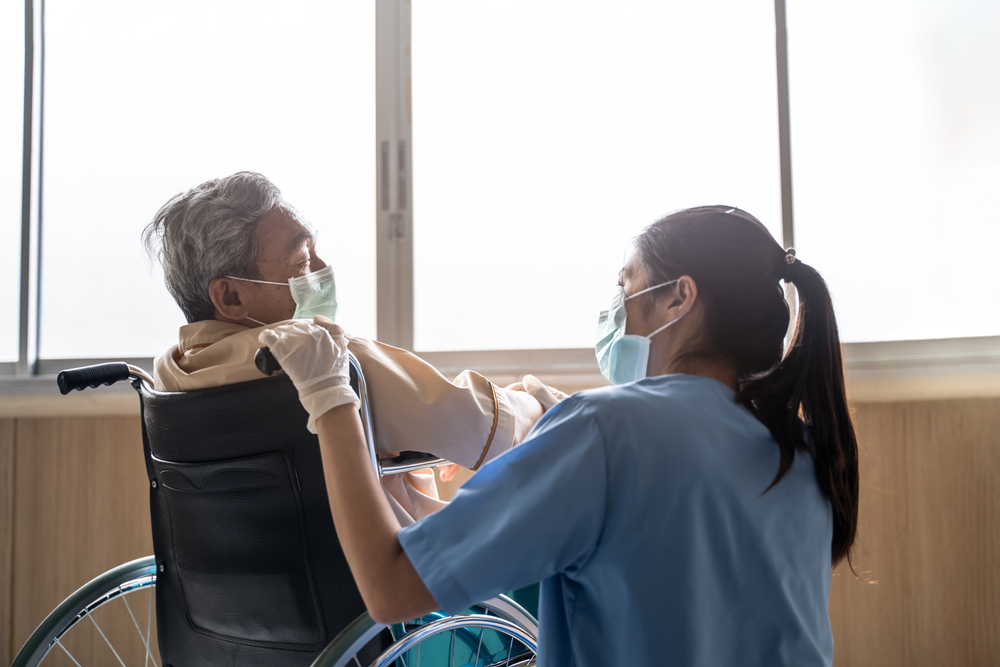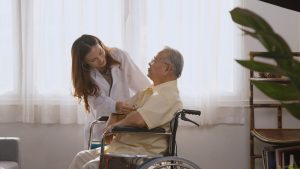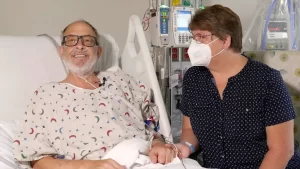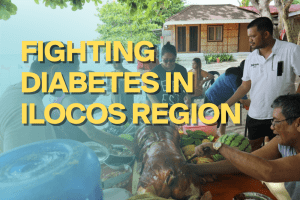Stroke or cerebrovascular accident (CVA) is a debilitating disease that is a leading cause of disability and death worldwide. Annually, about 13 million people have strokes, with 5.5 million deaths as a result. About 1 in 4 people over the age of 25 will have one in their lifetime.
Whether it is an issue of lifestyle, quality of healthcare, socioeconomic status, or the presence of other comorbidities, an understanding of stroke and raising awareness will help reduce its spread and burden to the at-risk individuals, families and society at large.
Definition of Terms
A stroke happens when there is a disruption to the blood supply to the brain, resulting in oxygen starvation, brain damage and loss of function. It can be classified into 2 main categories:
- Hemorrhagic stroke
-
- Accounts for <20% of stroke cases
- Occurs when a weakened artery ruptures and causes blood to leak into the brain
- Brain cells do not get oxygen and nutrients; the accumulation of blood creates pressure on, and damage to surrounding brain tissue
- Includes Intracerebral Hemorrhage (ICH) – bleeding inside the brain OR
- Subarachnoid Hemorrhage (SAH) – bleeding between the brain and the membranes that surround it
- Ischemic stroke
-
- Accounts for >80% of stroke cases
- Occurs when the blood supply to the brain is blocked; brain cells die from a lack of oxygen and nutrients
- Includes Thrombotic Stroke – blockage due to blood clot that develops in the arteries supplying blood to the brain OR
- Embolic Stroke – blockage due to blood clot which forms elsewhere in the body (usually the heart) and travels through the bloodstream to the brain
Transient Ischemic Attack (TIA) vs Stroke
Transient Ischemic Attack (TIA) has symptoms similar to a stroke, but CT scans or MRI results do not show signs of stroke. Typically, the blood supply to the brain is only disrupted temporarily. Recovery occurs spontaneously, and symptoms usually resolve within 24 hours. However, about 1 in 3 people who have a transient ischemic attack will eventually have a stroke, with about half occurring within a year after the transient ischemic attack. Thus medical attention is still warranted.
Emergency Signs
If the following signs of stroke develop, it is a must to seek immediate medical attention.
Acronym: BE FAST
B: Balance compromised?
E: Eye function/vision affected?
F: Facial droop?
A: Arm weakness (unable to raise arm) or numbness?
S: Speech difficulty?
T: If you see these signs, then is it Time to call for an ambulance or go to the hospital immediately
The sooner the person can get to a hospital for emergency treatment, the higher chances of recovery and prevention of disability.
Other signs include severe headache (usually described as “the worst headache of their life”), vomiting, or reduced consciousness. Depending on the area affected in the brain and the severity, if not treated right away it may lead to problems with motor skills (weakness of limbs, difficulty in ambulation), sensory problems, or difficulty in communication also known as “aphasia”.
Risk Factors for Stroke
Risk factors can be categorized into modifiable and non-modifiable. With this knowledge alone, the incidence of stroke can be drastically reduced if the modifiable factors are addressed or avoided as much as possible.
Modifiable Factors:
- High blood pressure
- Diabetes
- Prolonged, uncontrolled diabetes can cause damage to your blood vessels, increasing the risk of blood clot formation and stroke (1.5 times more).
- High cholesterol
- High blood cholesterol can cause a buildup of plaque (deposits of fatty substances, cholesterol, and calcium) on the inside of the artery walls, also thickening or hardening arteries (atherosclerosis), thus disrupting blood flow to the brain.
- Heart disease
- E.g. atrial fibrillation (AF) or irregular heartbeat predisposes to the formation of blood clots and embolic stroke.
- Smoking
- Smoking doubles your risk of stroke. Your risk will be equivalent to that of a non-smoker after five years of quitting.
- Physical inactivity
- Obesity
- Heavy alcohol consumption
- >2 drinks per day can increase blood pressure and the risk of stroke.
- Head trauma or injury
- Use of illegal drugs like cocaine and methamphetamine
Non-modifiable Factors:
- Advanced age
- Arteries narrow and harden with age. For each decade of life after age 55, your chance of having a stroke more than doubles.
- Male gender
- History of blood clots
- Family history and cardiac disease
Treatment (Acute)
Once the diagnosis is given with the help of a CT scan, MRI, or ECG, the doctor may proceed with the following depending on the type of stroke:
For hemorrhagic stroke which is caused by rupture of a weakened blood vessel (aneurysm)
- Medications are given to reduce blood pressure, and pressure in the brain, and to prevent seizures
- Surgery to stop the bleeding e.g.
- Clipping the aneurysm or inserting special coils to block off blood loss
- Craniotomy (creating a hole in the skull) may be needed to relieve accumulated fluid and pressure on the brain
For ischemic stroke/TIA which is caused by brain artery blockage due to a blood clot
-
- Thrombolytics i.e. clot-busting drugs like tissue plasminogen activator (tPA), or Alteplase IV r-tPA) are given to break up the clots responsible for the blockage.
- given within 3 hours of the onset of stroke symptoms and improve the chances of recovery.
- Surgery may sometimes be indicated e.g.
- Mechanical thrombectomy may be performed. During this procedure, a catheter is inserted into the affected blood vessel in the brain to remove the blockage and restore blood flow.
- Thrombolytics i.e. clot-busting drugs like tissue plasminogen activator (tPA), or Alteplase IV r-tPA) are given to break up the clots responsible for the blockage.
- In carotid endarterectomy, the carotid artery is cut open to remove plaque buildup and blood clots, then stitched back together.
Recovery
The extent of disability after stroke depends on the part(s) of the brain that was damaged, how soon treatment was given, as well as the age of the individual and comorbidities.
Recovery involves:
1. Regaining lost functions
- Speech therapists can help in addressing language, communication concerns and difficulty swallowing,
- Physiotherapists can help improve mobility, strength, and balance.
- Occupational therapists can aid in sensation problems, increasing independence or participation in daily activities, and exploring altered cognitive or social skills. Psychiatrists treat depression as it is also common after stroke.
2. Monitoring for possible complications or looking out for signs of
- Second stroke
- Blood clots in the legs
- Heart problems
- Bed sores
- Lung infection
- Urinary Tract Infection (UTI)
- Seizure
- Caloric deficit
- Falls
3. Stroke prevention with lifestyle changes, as most of the modifiable risk factors, are related to lifestyle choices
- Quitting smoking
- Cutting back on alcohol
- Observing a healthy diet preferably a Mediterranean diet
- Exercising regularly
- Taking prescribed maintenance medications regularly e.g. blood thinners or anticoagulants to prevent the risk of second (ischemic) stroke, medications to keep blood pressure, blood sugar, and cholesterol under control.












